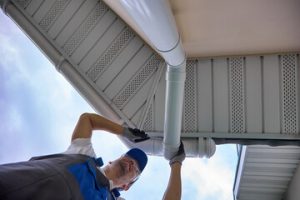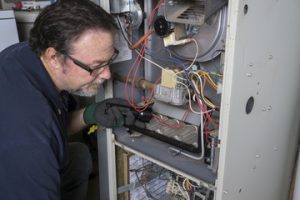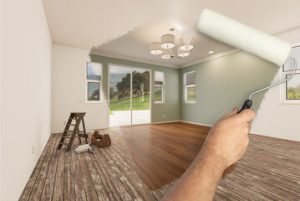Gutters work quietly above our heads. Yet their role in home protection is massive and often ignored. Gutter services exist to keep this silent system efficient. They ensure that every drop of rain moves safely away from the structure.

Many homeowners fail to see the real value of gutter services. They often think of them only when leaks appear or water pools near foundations. But by then, damage has already begun. The cost of neglect is far greater than routine care. Visit https://allamericangutterstc.com/ to learn more.
Modern gutter services go beyond cleaning. They now use advanced tools and inspection methods. Professionals look for cracks, warps, and blockages that weaken the flow. Their expertise prevents long-term structural damage.
A properly maintained gutter system controls rainwater with precision. It channels water away from roofs, walls, and basements. Without that control, moisture seeps into tiny openings. Over time, this causes decay, mold, and erosion.
New techniques in gutter services focus on sustainability. Experts now recommend eco-friendly materials and designs. These improve water flow while reducing waste. They help protect both the property and the environment.
Homeowners benefit from customized gutter solutions. Each building has unique roof lines and slopes. A tailored service ensures perfect alignment. It prevents overflow and optimizes drainage during heavy rainfall.
The lifespan of gutters depends heavily on maintenance. With regular service, they can last decades without major repairs. Professionals inspect for wear, clean debris, and tighten loose fittings. This keeps the system reliable through all seasons.
Clogged gutters are more dangerous than they appear. Stagnant water adds weight, bending the structure downward. It can even pull gutters away from the roof. Regular cleaning removes leaves and sediments before they cause strain.
One of the most overlooked benefits of gutter services is aesthetic preservation. Clean, aligned gutters enhance a home’s appearance. They show care and upkeep, which add property value. A neglected system, by contrast, signals disrepair.
Water damage spreads quietly within walls. Gutter services stop that process at its source. They redirect rainwater efficiently, preventing hidden leaks. That simple act saves thousands in potential restoration costs.
Professional gutter service teams also perform inspections after storms. They check for loosened sections and hidden blockages. Quick action prevents further damage from recurring rainfall. It’s a small task that carries big results.
Innovations in gutter design have changed how professionals work. There are seamless options that minimize leak points. Others use reinforced materials for durability. Each advancement offers longer life and lower maintenance.
Beyond technology, service frequency matters most. Seasonal cleaning ensures no build-up of organic debris. Professionals recommend inspection before and after wet months. This rhythm keeps water channels clear year-round.
Gutter services today also educate property owners. They provide guidance on how to maintain gutters between visits. Small habits like checking for rust or sagging make a difference. Awareness builds better protection over time.
Home safety begins with water management. Gutters are the first defense line against nature’s elements. Without their proper function, roofs deteriorate faster. Gutter services maintain that line so homes remain strong.
In some cases, repair isn’t enough. Replacement becomes essential when systems age beyond function. Gutter services include full installation using improved materials. These upgrades enhance efficiency and curb appeal alike.
Many modern homes now integrate gutter guards. These screens block large debris while allowing smooth water flow. Gutter services handle their installation and maintenance. It’s a simple improvement with long-lasting benefits.
Property owners often underestimate how quickly blockages form. Even small branches can start a chain of problems. Gutter professionals prevent that buildup before it escalates. Preventive action always beats emergency repair.
Gutter services play a major role in protecting foundations. Water pooling near the base weakens soil and structure. Proper drainage keeps the ground dry and stable. This prevents costly structural shifts in the future.
Energy efficiency also benefits from healthy gutters. Damp walls affect insulation and indoor climate control. By keeping moisture away, gutter systems indirectly lower energy costs. Maintenance supports comfort as well as savings.
Mold thrives in damp environments. Clogged gutters create exactly that condition. Professional gutter services stop mold before it grows. This protects both the home’s structure and its occupants’ health.
Roof longevity connects directly to gutter efficiency. When water backs up, it seeps under shingles and causes rot. Routine gutter servicing prevents such exposure. It ensures that roofs remain dry and durable.
Even small homes need reliable gutter management. The size of the building doesn’t reduce the risk of water damage. Every property deserves routine attention. Gutter services adjust strategies to fit each layout perfectly.
In commercial buildings, gutter systems carry heavier loads. Gutter services scale their solutions for such needs. They use industrial-grade materials and cleaning methods. The goal remains the same—steady, safe water flow.
Maintenance plans from gutter experts offer peace of mind. Scheduled visits eliminate the need to remember inspections. Each session restores function and confirms system health. It’s convenience paired with security.
A clean gutter system also protects landscaping. Overflowing water can erode soil and damage plants. Controlled flow maintains garden integrity and beauty. Gutter services make that possible through balance and care.
Winter brings special challenges to gutter systems. Ice buildup adds stress and blocks movement. Professional services prepare gutters for such conditions. They apply protective treatments that prevent freezing damage.
Smart technology now plays a role in gutter services. Sensors and cameras help detect clogs early. Professionals use data to plan proactive cleaning schedules. This blend of innovation and maintenance ensures peak performance.
Property resale value increases with consistent upkeep. Potential buyers notice signs of good maintenance. A well-serviced gutter system is proof of responsible ownership. It reflects care and attention to detail.
The cost of gutter services may seem small but delivers great returns. Every cleaning or inspection prevents costly repair work. Investing in such maintenance secures your home’s longevity. It’s a practical and wise decision.
DIY gutter cleaning may appear simple but carries risks. Slippery roofs and unstable ladders cause accidents. Professionals are trained and equipped to handle the job safely. Their experience ensures both quality and safety.
Insurance claims for water damage often trace back to poor maintenance. Gutter services reduce those risks significantly. Keeping drainage systems in top shape prevents disputes and repairs. Prevention always outweighs compensation.
Peace of mind is perhaps the best benefit of all. Knowing that your gutter system is functional brings comfort. It means fewer worries during storms or heavy rain. Gutter services deliver that assurance consistently.
Every home has unseen systems that protect it daily. Gutters belong to that quiet group of guardians. Their strength lies in maintenance and professional attention. Gutter services ensure that strength never fades.
With new methods, materials, and care strategies, gutter services have evolved. They are no longer just about cleaning but about full protection. Each visit from a professional adds to a home’s durability. The results speak for themselves over time.
The future of home maintenance will rely more on proactive care. Gutter services will continue to adapt and improve. As weather patterns change, their role grows even more vital. Protecting homes begins with protecting the flow of water.
Ultimately, the true worth of gutter services is not in what you see but in what you avoid. Every drop diverted is a potential repair prevented. Every inspection adds years of life to a structure. That silent shield keeps working, rain after rain.



